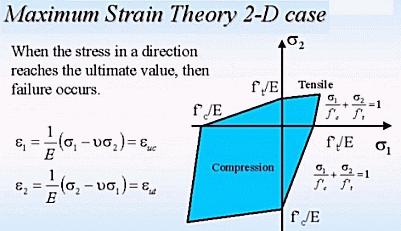SHEAR STRESS, MAXIMUM
It may seem strange that failure does not occur on the planes that sustain the maximum shear stress (at theta= alpha = 45° to sigma1). The lower angle is a result of the competing effects of normal stress and shear stress on a given fracture orientation. The development of a shear fracture is promoted by both a minimum normal stress and a maximum shear stress on the fracture plane, but the normal stress on a plane is not a minimum at the same orientation for which the shear stress is a maximum. Therefor
e, the fracture angle is an optimization of these two competing effects. The maximum strength for the material occurs when the anisotropy is oriented such that shear fracture develops across the plane of weakness and fracture does not occur until the Mohr circle reaches the outer failure criterion line.SHEAR STRESS, SIGN CONVENTION
Shear stress, sign convention
The sign of the deviatoric stress is an indication of the relative effect of a given normal stress. For instance, if the sign of a deviatoric stress is negative, even though the stress is a compressive stress, its relative effect (i.e.. relative to the other normal stresses acting on a point) is tensile. The least principal stress (sig 3) is always a negative deviatoric stress and can be thought of as a relative tensile stress, even in a situation where all of the principal stresses are positive.
